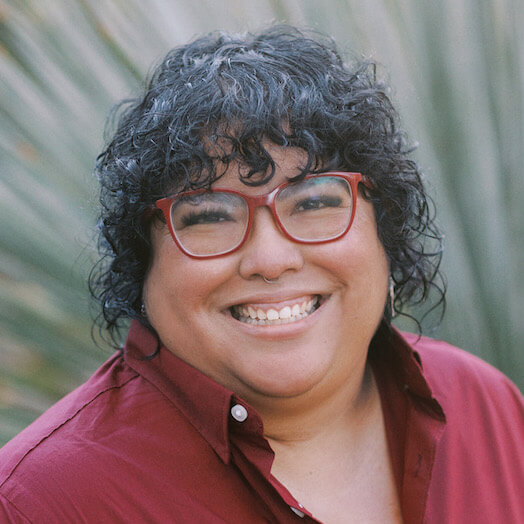
Black-and-white thinking, also known as polarized or dichotomous thinking, is a manner of thinking that relies on extremes. In other words, rather than viewing the world around you as complex and nuanced, you see it as one thing or another.
Black-and-white thinking is considered a cognitive distortion because it can prevent people from seeing themselves, the world around them, and their relationships realistically and instead sort them into two categories (typically “good” and “bad”) with no in-between.
What Does Black and White Thinking Look Like
More accurately, what does this type of polarized thinking sound like? After all, we’re more concerned with that voice in our head saying something is always or never the case.
So, what words can typically come with this type of thinking? If you find yourself constantly thinking these words, you may be struggling with polarized thoughts.
- Never
- Impossible
- Always
- Ruined
- Perfect
How Black and White Thinking Affects Us
There are a number of ways that black-and-white thinking can harm our thinking. Some of these negative effects are more internal — how we think about ourselves — and some are more external. Here are four of the most prominent effects that black-and-white thinking can have on us when left unaddressed.
Impacts Relationships
Relationships are complicated and typically have their ups and downs. Individuals who view the world in a polarized light can find these normal ups and downs to completely change a relationship. One day your partner may be the best person on the planet, and the next, they may be the worst.
A constantly changing dichotomous view of your loved ones can affect your ability to connect and communicate with them. This can harm your ability to truly see them as the complex human beings that they are, which means that you are unable to accept and understand them on a deeper level — resulting in stunted relationships and connections.
Lowers Self-Esteem
We all want to be “good” people. But, if we get too caught up in labeling actions, desires, and qualities as “good” and “bad,” we can get stuck in a particular image of what this really means. Dichotomous thinking can make accepting ourselves as complicated and challenging, and we may end up feeling bad about ourselves because we do not fit the standard for a “good” person that we have in our minds.
This type of thinking may also make you extremely sensitive to other people’s opinions and harm your ability to accept criticism and grow as a person.
Holds You Back From Success
Because dichotomous thinking relies on absolutes, you may find yourself limiting what you feel you can and can’t do. Tell us if this example sounds familiar to you. You can’t quite understand the problems on your math homework after hours of trying, so you think, ‘well, I’m just bad at math.’ This thought arises from a success vs. failure mindset and comes up because you were unable to solve the problems on your homework. But this one instance does not mean that you are bad at math. All it means is that you may not have grasped this particular concept quite enough to handle the problems you were given. Unfortunately, you have now decided that math isn’t your thing, and you no longer have as much of an interest in learning it in class. So, you continue to pay less attention in your math classes and perpetuate the thought that math just isn’t your thing rather than opening up to the possibility of learning more.
This same process can happen outside of school too. Maybe you have extremely set thoughts of what your role in your job is and what role your co-workers play. Maybe you are ‘not an artistic person,’ and you never take that ceramics class that you always wanted to because you ‘wouldn’t be good at it.’
Disrupts Healthy Habits
We’ve all been in a situation where we have developed a healthy habit, but upon not seeing the changes we were hoping for in our lives, we dropped the habit because it was not working. This could apply to nutritious eating habits, sleep habits, exercise habits, and even mindfulness or self-care habits.
One area where dichotomous thinking is very pronounced is eating habits. This thinking is linked to a number of eating disorders where people look at and label foods as either “good” or “bad” and eat in cycles — like binging and purging or all-or-nothing diets.
The Link to Anxiety and Depression
There is a surprising link between black-and-white thinking and mental health disorders like anxiety and depression. Many studies have found that individuals who have these disorders tend to use more polarizing or “absolutist” language than individuals who do not suffer from these disorders.
This type of thinking can leave us constantly belittling ourselves or others, which can be devastating if you are already suffering from mental health disorders like anxiety or depression. When we think in absolutes, we allow no space for change or progress, which can lead to rumination and worsen feelings of anxiety or depression.
How to Overcome This Manner of Thinking
Not everyone has a tendency to think in absolutes, but if you do, you may be wondering what you can do to overcome it. Black-and-white thinking can make life hard for you both in your professional and personal life, so it is important to address it as early as you can.
Here are some tips to help you overcome black-and-white thinking in your life.
Recognize You Are More Than What You Do
Many of us grew up with the saying, “you are defined by your actions,” and while what we do in our lives helps other people to understand what kind of a person we are, you need to realize that you are more than just a collection of actions.
Instead of equating our worth with our performance in certain areas, remember that you are a complex and nuanced human being. Sometimes you may do things that you aren’t happy with. Sometimes you will make the wrong choice. Sometimes you may not answer the question on the whiteboard correctly. These are all part of being human, and they do not make us a failure or a bad person.
List Out Your Options
Black-and-white thinking is all about dichotomies. You are either good or bad. That choice was either right or wrong. You can only do this or that. Rather than falling into this dichotomous thinking when you are making a decision, try giving yourself additional options. Break the cycle of either-or in your head by listing out all of the options before you. At first, this may be challenging, so you may want to try actually writing out a list of all of your options when you find yourself thinking you can only choose between two extremes.
Get a Second Opinion
External perspectives are an excellent way to break up dichotomous thinking. Other people have different perspectives on a situation that can not only help you entertain additional options but it can also help you to better understand other people’s decisions. This can result in deeper connections between you and your loved ones and help you begin thinking of other options in your own mind, even without asking another person as you practice.
Remind Yourself of Your Reality
If black-and-white thinking has been ingrained in your thinking patterns for a long time, it may be hard to overcome. Sometimes you may find yourself stuck between two extreme choices. In these situations, it can help to remind yourself of some small, factually accurate statements. For example, rather than only giving yourself two options, remind yourself that there are many ways that you can solve any given problem. Before jumping to an answer, remind yourself that you can make a better decision if you give yourself some time to think about your options and gather more information.
Talk to a Therapist
Maybe you’ve tried the tips we mentioned above, and you are still having trouble overcoming your black-and-white thinking. Before you let yourself think that you’ll ‘always think this way,’ recognize that changing the way you think is a challenging process. It is hard work, and it can be even more challenging when you try to do it alone.
Instead of giving up and simply accepting that you’ll always think in this polarized way, try reaching out to a trained professional. Therapists are incredible resources for anyone looking to work on improving their lives, and they can help you identify the situations where this thinking may come up most often, as well as how you can best overcome it. So, if you feel you could use some personal guidance on how to overcome black-and-white thinking, please do not hesitate to reach out to us at Love Heal Grow.
























